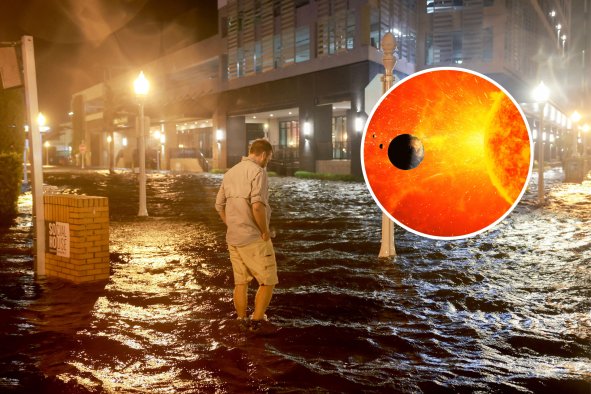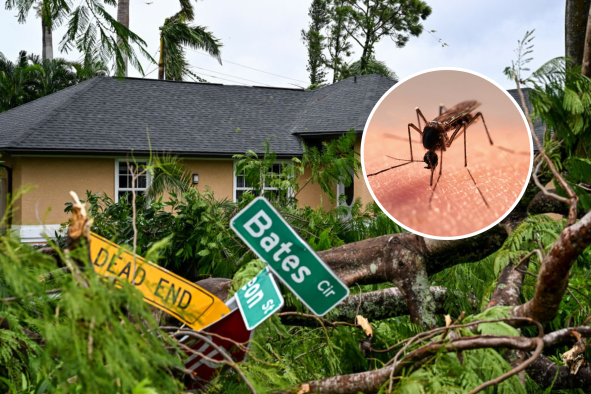During Thursday's "severe" geomagnetic storm that sparked the northern lights across most of the U.S., electrical currents surged through rocks under the ground around the country.
A map from the National Oceanic and Atmospheric Administration (NOAA) and the U.S. Geological Survey reveals the extent of these electrical currents in the ground, which peaked in the Midwest at about 5 volts per kilometer. This is about 100 times the normal voltage seen when no solar storm is occurring.
The map is a snapshot from about 4:40 p.m. ET of a constantly changing scene made using measurements of real-time geomagnetic activity compared with the 3D conductivity of the Earth. The estimated voltage helps authorities protect electrical grids in the worst-hit areas from damage.
These electrical charges were generated by the G4 geomagnetic storm that raged in our atmosphere throughout Thursday and last night, triggered by a coronal mass ejection (CME) from the sun colliding with the Earth's magnetic field.
The fluctuations in our planet's magnetic field during a geomagnetic storm create electric fields on the Earth's surface. When these electric fields interact with conductive materials like rock, soil or water, they induce electrical currents in the ground.
These currents, coupled with the electric fields in the ground, can lead to geomagnetically induced currents, which can travel through power grid systems. These GICs overload transformers and other electrical components, leading to potential damage or large-scale power outages.
Daniel Brown, an associate professor in astronomy and science communication at the U.K.'s Nottingham Trent University, told Newsweek: "As a result of these storms changing our magnetic fields and increasing currents flowing in it, these storms can induce substantial currents on the ground in power infrastructure. For example, power grids. This can result in substantial and catastrophic power surges severely damaging substations and causing blackouts."
In 1989, a powerful CME caused a geomagnetic storm that knocked out the Hydro-Québec power grid in Canada, leaving millions of people without electricity for hours. Fortunately, the peak voltage recorded during last night's storm peaked at about a quarter of the strength of the currents that caused the Great Quebec Blackout.
Geomagnetic storms are measured on a scale of G1 to G5, with G5 being the most powerful and most rare. The G5 storm this past May was the first of its kind since 2003.
More powerful geomagnetic storms can generate more powerful electrical currents, as well as resulting in the northern lights being seen farther south than usual. That is why the aurora was spotted as far south as Alabama, Mississippi, Texas and Southern California and even in Cuba and Mexico.
Geomagnetic storms can also cause problems with GPS navigation and satellite operations.
The geomagnetic storm is forecast to continue into Friday, getting much weaker as the day goes on.
The NOAA's Space Weather Prediction Center said: "The geomagnetic field is likely to reach G1-G3 (Minor to Strong) conditions, with a chance for G4 (Severe), through the rest of 11 Oct if the Bz component maintains a southward orientation coupled with higher solar wind speeds.
"A transition to a negative polarity CH HSS is likely on 12 Oct causing active to G1 (Minor) storming," the center said.
Do you have a tip on a science story that Newsweek should be covering? Do you have a question about geomagnetic storms? Let us know via science@newsweek.com.
Disclaimer: The copyright of this article belongs to the original author. Reposting this article is solely for the purpose of information dissemination and does not constitute any investment advice. If there is any infringement, please contact us immediately. We will make corrections or deletions as necessary. Thank you.



